
 Ways to Decorate JUST ABOUT ANYTHING amy anderson workman publishing new york Contents Introduction Maybe its because my mom was a teacher, but Ive always felt a certain responsibility around crafting. Not just to do it and show others the projects I create, but also to teach people how to make them. I truly believe that anyone can be creative; it just takes some practice and commitment (and even a few fails). Its not necessarily something you will be instantly good at. One thing that helps people learn how to be makers is to start with simple supplies so that they arent intimidated. And that leads me back to why I started a blog on washi tape.
Ways to Decorate JUST ABOUT ANYTHING amy anderson workman publishing new york Contents Introduction Maybe its because my mom was a teacher, but Ive always felt a certain responsibility around crafting. Not just to do it and show others the projects I create, but also to teach people how to make them. I truly believe that anyone can be creative; it just takes some practice and commitment (and even a few fails). Its not necessarily something you will be instantly good at. One thing that helps people learn how to be makers is to start with simple supplies so that they arent intimidated. And that leads me back to why I started a blog on washi tape.
I saw how easy it was to use, how pretty it was, and a lot of potential for many projects. Ive always had an affinity for Asian-inspired style and design, so when I saw my first roll of washi tape, the creative wheels started turning. I honestly think I got my first roll of washi tape for free, and when I started the blog Washi Tape Crafts, I hadnt even used it that much. But as I did with one of my other craft blogs, Mod Podge Rocks, I decided that part of my learning process would occur while I was writing the blog posts. I would try out projects and experiment, and feature others doing the same thing. When I began my blog, I didnt see that many people using washi tape (outside of other bloggers), but now its starting to become somewhat of a craft cultural phenomenon.
Major retailers sell these fun-patterned tape rolls, and we all just grab them off the shelves with maybe a few ideas of how to use them. And honestly the question I get asked most often is, I love washi tape, but what can I do with it? I really want you to have a great experience with washi tape and this bookI know youre going to love playing, experimenting, and generally being creative. I encourage you to go crazy with your tape and not be afraid. Washi tape is truly one of those craft supplies that is no fail, and there arent very many that can be said about. Weve included several rolls of washi tape with this book. If you make a project, Id love for you to share it with me at .
I get absolutely thrilled to see what others are making with washi tape, because there really is no end to the possibilities. Now enjoy the book and get washiing!  Chapter 1 Tools and Techniques One of the great appeals of washi tape is that it is so easy. Its fairly foolproof. But there are still particular tools and techniques that will all but guarantee crafting success. As with any craft, its wise to be prepared. What Is Washi Tape? I get this question a lot, so lets start at the very beginning: Washi tape is a low-tack tape, traditionally made of paper, thats most commonly used in craft projects and design work.
Chapter 1 Tools and Techniques One of the great appeals of washi tape is that it is so easy. Its fairly foolproof. But there are still particular tools and techniques that will all but guarantee crafting success. As with any craft, its wise to be prepared. What Is Washi Tape? I get this question a lot, so lets start at the very beginning: Washi tape is a low-tack tape, traditionally made of paper, thats most commonly used in craft projects and design work.
In Japan, where it originated circa 2006, its simply known as masking tape, but in its short and prosperous life in the United States, it has become known as washi tape (wa meaning Japanese and shi meaning paper). Today, many people use washi tape as a generic term to describe any patterned tape on a small roll that is tearable and repositionable, even if its not technically made of paperbut true washi tape is paper-based. In Japan, washi is commonly made using fibers from the bark of the gampi tree, the mitsumata shrub, or the paper mulberry; it can also be made using bamboo, hemp, rice, and wheat. Though washi tape is made of paper fibers and is easy to tear, it is surprisingly strongonce its on a craft project, washi tape holds up nicely to wear. I think its just magical! How to Use This Book Im excited to share the 110 washi tape projects in this book with youthey represent a variety of styles, types, and looks, ranging from very easy (requiring only a few supplies) to more advanced (requiring a few more suppliesand maybe a little more time). Use this book as an inspirational tool to guide your own washi tape projects.
You can complete the project exactly as its shown, but I encourage you to customize the idea to your needs, to get creative, andmost importantto have fun! Why Do I Love Washi Tape? Oh, let me count the ways.... Washi tape comes in an unbelievable number of color and pattern combinations. Its very easy to useyou simply pull and tear (or cut) it, and you can start creating! Each roll is slightly transparent, so painted or colored paper backgrounds will show through. Its temporary and removable; theres no goo left when its peeled up. All sorts of surfaces look good with washi tape, and it has lots of craft applications. Washi tape is reusable and biodegradable, and its made from renewable resources.
How to Use Washi Tape One of the main reasons washi tape is so popular is that its very easy to use. You simply cut or tear it off the roll and smooth the tape onto the surface of your choice. I really like how the torn edges of washi tape look on some projects. Other times a clean edge makes all the difference. It all depends on the look that you are trying to achieve. Washi tape is temporary on most surfaces and does not leave a sticky residuebut always test if you arent sure.
Youll typically need a sealant to make the look more permanent. Throughout the book, Ive included instructions for making washi tape longer lasting if required for a project. What Will It Stick To? What I love about washi tape is that it sticks to nearly anything! Washi will adhere to a surface temporarily, and it can be peeled off easily if you decide to remove itand once its on a surface, you have the option of making it more permanent with an extra step or two. You can use washi tape on a variety of surfaces, including: Paper and papier-mch:scrapbook paper, cardstock, printer paper, cardboardWood:picture frames, wooden utensils, doors, pencils, craft sticksGlass:jars, cups, vasesCeramic:mugs, plates, plaques, tilesMetal:kitchen appliances and refrigerators, watering pails, buckets, bicyclesWalls (both painted and not painted)Cork What Wont It Stick To? The following surfaces are difficult (but not impossible) to stick washi tape to. If you see the tape peeling off, you might need a more permanent solutionsuch as a decoupage mediumto keep the washi tape in place. Fabric:You can use washi tape on fabric for temporary decor (for example, a table runner for a partysee ), but, because washi tape isnt washable, youll need to remove it before you clean your item.Plastic:Washi sticks to plastic, but it might peel back over time. Fabric:You can use washi tape on fabric for temporary decor (for example, a table runner for a partysee ), but, because washi tape isnt washable, youll need to remove it before you clean your item.Plastic:Washi sticks to plastic, but it might peel back over time.
Youll likely need a sealant such as a decoupage medium to keep it down.Spheres and tapered surfaces:Washi tape is straight and flat, so putting it on any surface with a curve, however slight, will cause ruching (the tape will gather, pleat, and stick to itself). Sizes and Styles Washi tape, like most tape, comes in rolls. The most common size available is " wide with 25' to 26' of tape. However, as washi tape has become more and more popular, companies have started producing different sizes, so if you look hard enough, you might be able to find widths such as ", ", and 3". Ive even seen sheets of washi tape! In terms of colors and patterns, the choices are endless. Just about every time Im shopping for supplies, I see a pattern Ive never seen before. And then I feel that tug: yet another roll I
Next page



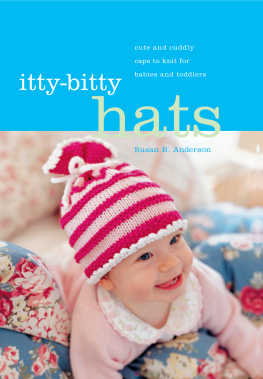




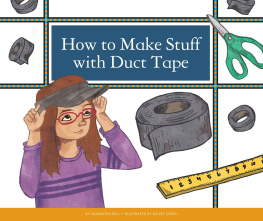
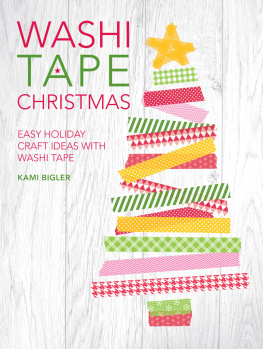

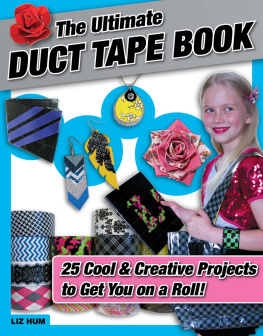
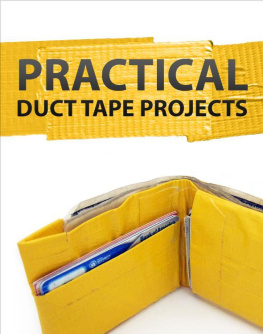

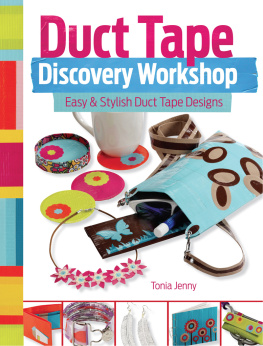
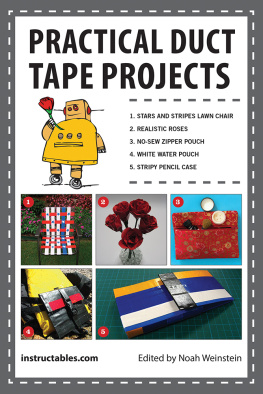

 Ways to Decorate JUST ABOUT ANYTHING amy anderson workman publishing new york Contents Introduction Maybe its because my mom was a teacher, but Ive always felt a certain responsibility around crafting. Not just to do it and show others the projects I create, but also to teach people how to make them. I truly believe that anyone can be creative; it just takes some practice and commitment (and even a few fails). Its not necessarily something you will be instantly good at. One thing that helps people learn how to be makers is to start with simple supplies so that they arent intimidated. And that leads me back to why I started a blog on washi tape.
Ways to Decorate JUST ABOUT ANYTHING amy anderson workman publishing new york Contents Introduction Maybe its because my mom was a teacher, but Ive always felt a certain responsibility around crafting. Not just to do it and show others the projects I create, but also to teach people how to make them. I truly believe that anyone can be creative; it just takes some practice and commitment (and even a few fails). Its not necessarily something you will be instantly good at. One thing that helps people learn how to be makers is to start with simple supplies so that they arent intimidated. And that leads me back to why I started a blog on washi tape. Chapter 1 Tools and Techniques One of the great appeals of washi tape is that it is so easy. Its fairly foolproof. But there are still particular tools and techniques that will all but guarantee crafting success. As with any craft, its wise to be prepared. What Is Washi Tape? I get this question a lot, so lets start at the very beginning: Washi tape is a low-tack tape, traditionally made of paper, thats most commonly used in craft projects and design work.
Chapter 1 Tools and Techniques One of the great appeals of washi tape is that it is so easy. Its fairly foolproof. But there are still particular tools and techniques that will all but guarantee crafting success. As with any craft, its wise to be prepared. What Is Washi Tape? I get this question a lot, so lets start at the very beginning: Washi tape is a low-tack tape, traditionally made of paper, thats most commonly used in craft projects and design work.